‘As a venue for hiking and fell running, Stanage Edge is unbeatable’ – Kevin Rushby
When we were kids it was always UK holidays, usually under canvas, and always recalled with affection. I have no problem giving up foreign travel for a while, although I do miss the sheer scale and biodiversity of distant wildernesses and worry about the communities who invested hope, and effort, in tourism as a way of holding off the oilmen, gold prospectors and road diggers. I’m praying they hang on. We will return!
Meanwhile, the UK has some epic adventure experiences to offer, and no airport in between. (It’s now over a year since I flew anywhere, but the nightmares about getting lost in the perfume maze at Manchester Terminal 3 are still there: “A little squirt … sir?”) Among Britain’s great adventure spots, none beats Stanage Edge in the Peak District for its wealth of short routes – the rocks are never more than 25 metres tall. It’s a millstone grit escarpment that runs for about three miles to the north-east of Hathersage and also has a few notable outliers. It’s also an unbeatable venue for hiking and fell running.
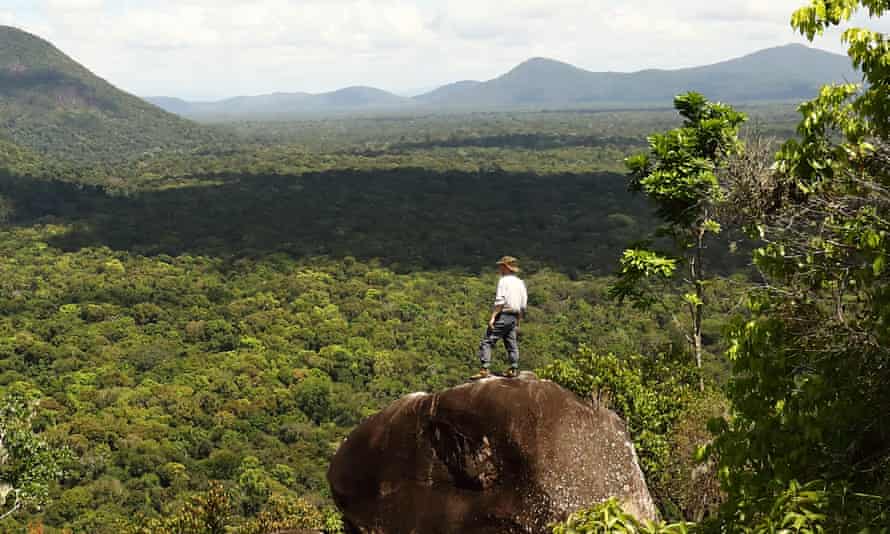
Climbing here kicked off in 1949 when the great pioneer Joe Brown (who died at the age of 89 in April 2020) set what seemed a superhuman standard with Right Unconquerable, a 14-metre ascent up a narrow crack, followed by a nerve-jangling finish. Thousands have done it since, but he was first – and with homemade postwar gear. As a small boy I watched Brown climb the Old Man of Hoy on live television and it left a lasting desire for adventure in such places.
Even if climbing is not your thing, a walk along the edge of the escarpment is a delight. Scrambling skills and good balance make it even more satisfying. A fine circuit would start at Hathersage station, head up to the escarpment, along to High Neb, then back below the Edge. Keep a lookout for a small cave that leads down to a natural rock balcony on the escarpment face. Known as Robin Hood’s Cave, it’s a wonderful place from which to admire the view. If you really want to mix it up, Hathersage has a fine outdoor swimming pool too.
‘We’ll swap Austria for a weekend camping in the Cairngorms’ – Caroline Eden
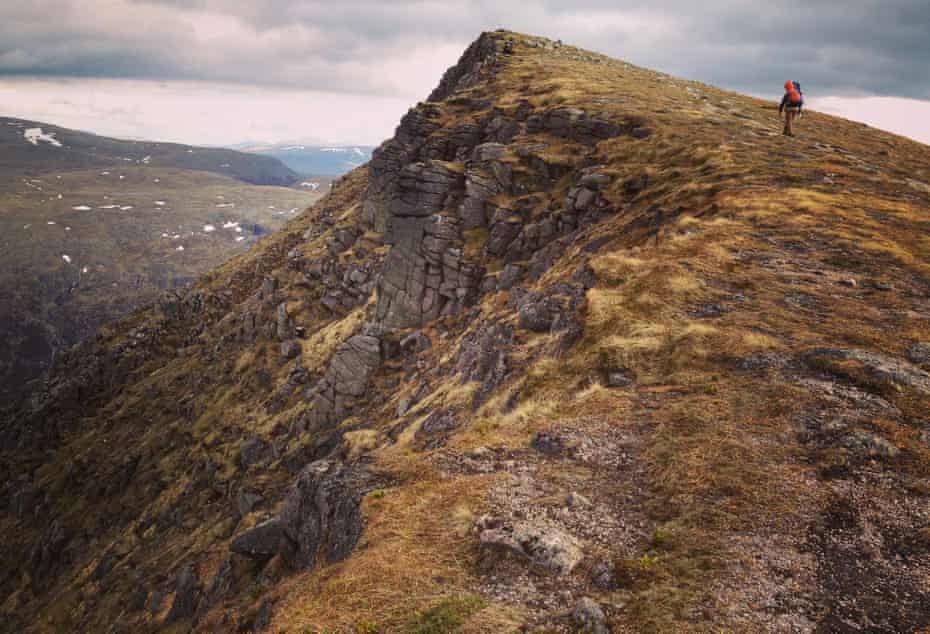
On a walking holiday, there is no better incentive for tackling a vertical hill than lunch at the top. Unfortunately, my annual eating-drinking-walking summer jamboree to Austria’s Salzburgerland is looking dicey.
Usually, the trip would follow a well-rehearsed pattern: in July, my husband and I drop Darwin, our beagle, off with his canine cousins before flying to Salzburg. Once there, after a quick Sachertorte at the city’s swish Hotel Sacher, we head into the surrounding mountains for a week of hill walking.
Days are spent reading maps, hiking through valleys and filling up on dumplings and cheese. The walking can be tough, but the lakes, Alpine flowers and tinkling cow bells are all head-clearing and restorative. One hut we always visit, known simply to us as “Mickey’s hut” is run by a man well into his 70s who pours us shots of zirbenschnaps (pine schnapps) from a demijohn. We share little common language, but it’s only once we’ve toasted Mickey that the holiday starts.

This year, we’ll swap Austria for a weekend camping in the Cairngorms, a couple of hours away by car from our home in Edinburgh. We’ll pack our musty old two-man Red Fox tent and a stove, and Darwin will come, too.
There will be no Sachertorte or schnitzel, but I’ll make an effort, baking oaty breakfast bars, putting rice with smoky beans into Tupperware for heating up, packing cans of Portuguese sardines and a hip flask of sloe gin. Days will mean walking high above Glen Feshie, a wild valley of Scots pinewoods, and tackling two Munros: Sgor Gaoith (1,118 metres, “windy peak”) and Mullach Clach a’ Bhlàir (1019 metres, “summit of the stone of the plain”), while evenings will be more about stargazing than propping up the bar. But best of all, at stages there will probably be nobody else around. The Cairngorms still feels thrillingly remote. Mickey’s schnapps will just have to wait.
Caroline Eden is a food and travel writer. Her latest book is Red Sands (Quadrille, £26)
‘Although diminutive, the Malvern Hills still provide a good dose of wow factor’ – Lois Pryce
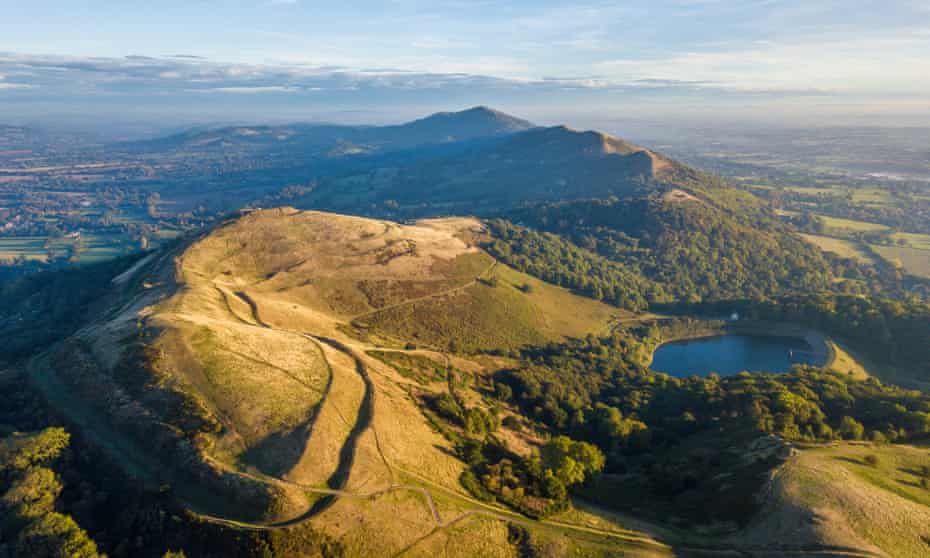
I am usually to be found in the Spanish Pyrenees in June, co-hosting off-road motorcycle navigation “treasure hunt” events, but the uncertainty surrounding any attempts to make plans, not to mention the sheer hassle and joylessness of international travel in the Covid era, has led me to forgo foreign shores this summer and stick to UK-based adventures.
While the Malvern Hills aren’t quite up to the Pyrenees in scale (respective high points: 425 metres v 3,404 metres), that’s where I’ll be heading for a mini-mountain fix, walking their length during the longest days of summer. My inspiration and guide to this journey will be an old niche publication that I picked up years ago, detailing the locations and history of the 130 natural springs and wells of the Malverns. Some are still in use and celebrated in elaborate Victorian spa-town style, such as St Ann’s Well, some are simply gushing spouts in the side of a hill and others have been abandoned or decommissioned. One of the highlights of travelling in the Pyrenees is drinking crystal-clear spring water from the streams and roadside fuentes, so I will be attempting to keep this wilderness vibe alive as I stride out across the Midlands.
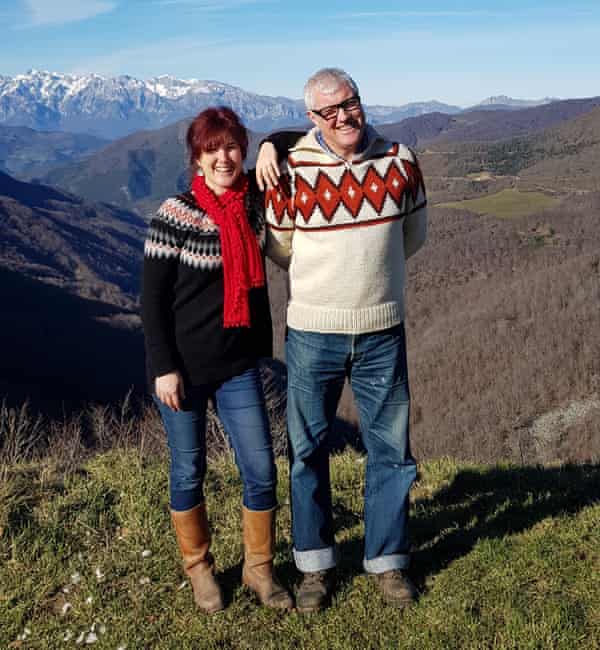
Although diminutive, the Malverns still provide a good dose of wow factor. The walk along the ridge feels wild and remote, even though the roofs and spires of Great Malvern are visible just a few hundred metres below. On a fine day you’ll be rewarded for your climb with sweeping views across the Severn Plain to the Cotswolds in the east, and across the Wye valley to Wales and the Black Mountains in the west. As well as the natural springs that made Malvern famous, the 10-mile walk takes in iron age hillforts, a dramatic flooded quarry for a cooling dip, and Castlemorton Common, the site of the 1992 rave that brought about the Criminal Justice Act. These days the common is a serene expanse of unspoiled moorland, home to just a few sheep and the occasional old raver making a pilgrimage.
All British life is here – ancient, eccentric, subversive – and for this summer, while the world finds its feet again, that will do just fine.
Lois Pryce is the author of Revolutionary Ride: On the Road in Search of the Real Iran (Nicholas Brealey/Hachette), among other books
‘Spain is off the cards, so I’ve set my compass for Northern Ireland’ – Phoebe Smith
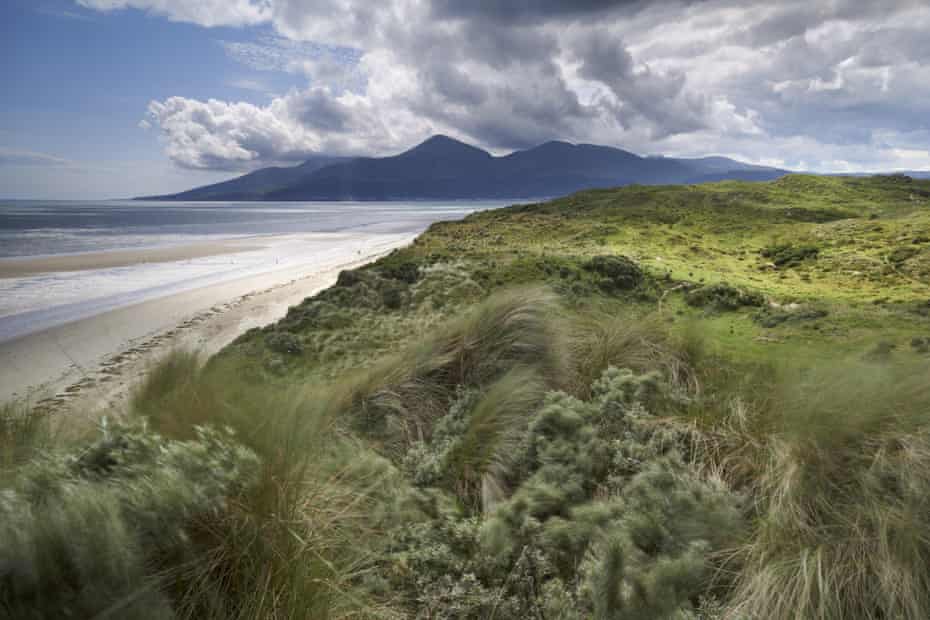
There are probably few who would get excited about walking to the “end of the world” – especially when, at times, the pandemic has made us feel like we’re metaphorically already there. But since walking a chunk of the Camino de Santiago in Spain five years ago, I’ve been longing to return to complete an extra section many miss out. That is the Camino Finisterre, the only trail that starts at Santiago de Compostela and ends at the Atlantic Coast in what was once believed to be the edge of the earth.
I’m not a religious person, but I do love treading in the footsteps of pilgrims past, contemplating my place on this planet, meeting others who for many reasons have taken time out of their hectic lives to do the same, and – if I’m honest – stopping frequently for coffees, cakes and chats in cafes en route (the nature of pilgrim paths mean towns naturally are built up alongside them to service holy hikers).
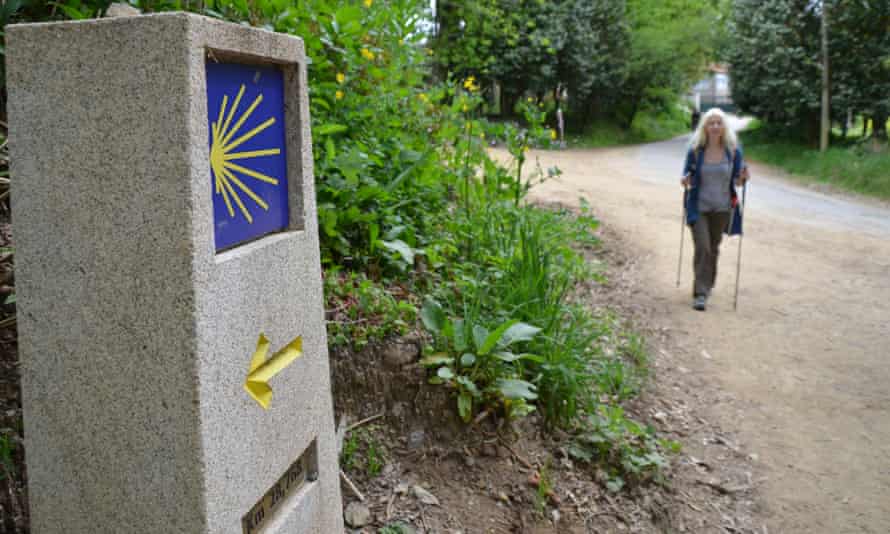
Spain is, for now, off the cards, so instead I’ve set my compass for Northern Ireland and a newly signed pilgrim path. Following in the footsteps of the country’s patron saint, the 132km linear St Patrick’s Way, begins in Armagh – where he built his first church and ends in Downpatrick – his final resting place.
Along the way there are churches and religious sites, as well as the St Patrick Centre, but I’m longing to follow the canal towpaths to get an insight into the area’s industrial legacy. I’m also looking forward to seeing the Mourne mountains, exploring the seaside town of Newcastle (and checking out the Mourne Seafood Bar), wandering along the seal hotspot of Murlough national nature reserve, catching sight of the ruins of 13th-century Dundrum Castle, visiting the healing wells of Struell and strolling amid the dunes of Tyrella beach. Eventually, I’ll arrive at the Irish Sea, a place that for Patrick pre-trip was also, rather fittingly, considered ‘the land at the end of the world’.
‘Instead of ice-fishing in Finland, I’ll walk along the coast of Fife for a lunch of fresh-cooked lobster’ – Dan Richards
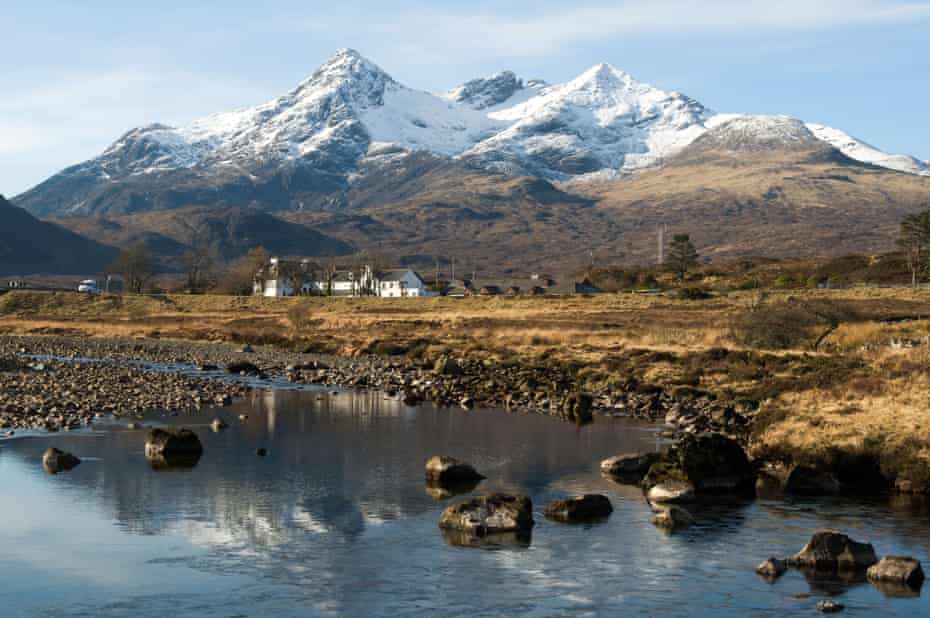
Many of my travel plans for 2020 and 21 (now deferred) involved journeys to places I’ve already been. I meant to go ice-fishing with Marie Kellgren in Finland, scooting over the frozen Baltic Sea on a fan-sled; halieutic adventures in the long Scandinavian night. I intended to return to Svalbard to go kayaking with my friend, Erlend Øian – what a wonderful trip that would have been, may still be, just not yet. Home here in Edinburgh, Instagram has allowed me a window into their lives and exploits: the ice around the Pellinki archipelago is now thawed to springy slush and Marie can motor through in her boat. Erland is roving, skiing, climbing: having mountain fun.
However, all is not lost and there’s fun and escape to be had in Scotland. Once things open up and are safe, I plan to catch a train to St Andrews, then cycle down to the fishing villages which dot the East Neuk of Fife. I dream of walking along the coast to Crail for a lunch of fresh-cooked lobster at the little harbour – it has a shack that cooks them up beautifully. I’ll sit on the sea wall and make a happy mess while toasting Marie in Pellinge.

And then, in salute to Erlend, perhaps I’ll head to the Cuillin mountains on the Isle of Skye. I never properly climbed it, though it’s knitted through my family history – my great great aunt, the mountaineer Dorothy Pilley, writes in her memoir of traversing the black gabbro stegosaurus of Sgùrr nan Gillean alongside many other climbs and scrambles registered despite “five weeks of wind and hail, rain, mist and snow”. In the same chapter she mentions a facet of her passion to which many will surely relate in 2021.
“Dreams of other ranges filled my days. I haunted second-hand bookshops for climbing literature […] I would go far out of my way to look, for the hundredth time, at a photograph of the Meiji or Mont Blanc […] So, when out of these dreams the actuality of a visit to Skye began to develop, there was fuel enough ready to be consumed.”
Dan Richards is the author of Outpost: A Journey to the Wild Ends of the Earth (Canongate), which is available to buy at the Guardian Bookshop





